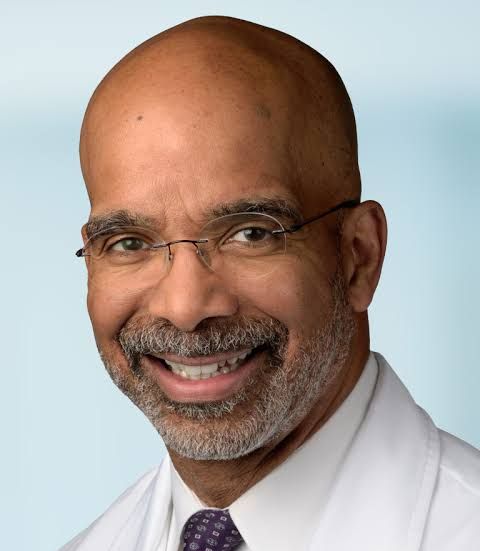News
Article
Better Data, Leadership Needed for Global Health Equity in Heart Failure
Author(s):
The final day of the European Society of Cardiology 2023 Congress featured a joint session with JAMA Cardiology, “Achieving Global Health Equity: A New Challenge in Heart Failure.”
The pandemic did not create disparities in heart failure outcomes between White patients and patients of color, but it certainly revealed them. Moving forward from this seminal event in health care will require better understanding of this history that created it, better data to drive solutions, and especially better leadership. That was the message from speakers at the European Society of Cardiology’s joint session with JAMA Cardiology, held August 28 on the final day of the 2023 Congress, “Achieving Global Health Equity: A New Challenge in Heart Failure.”
Moderated by Robert Bonow, MD, MS, professor of cardiology at Northwestern University and editor, JAMA Cardiology, and Bettina Heidecker, MD, head of heart failure and cardiomyopathy, Charite University Hospital, Berlin, Germany, the session featured 4 speakers:
- Shrilla Banerjee, MD, interventional cardiologist, Surrey and Sussex Healthcare Trust, Redhill, United Kingdom;
- Karen Sliwa, MD, PhD, director, the Hatter Institute for Cardiovascular Research in Africa, University of Cape Town, South Africa;
- Sadiya Khan, MD, MSc, associate professor of medicine and preventive medicine, Northwestern University, Chicago; and
- Clyde Yancy, MD, MSc, vice dean for diversity and inclusion and chief of cardiology, Northwestern University.
Bias in health care. Banerjee began by introducing the term “BAME,” which she said is an umbrella term for “Black and minority ethnic” that arose
Banerjee

during the pandemic to describe the populations seeing more than their share of deaths and severe disease. “Really, what it was meant to mean was all populations that were not White, and by excluding White ethnicities, it also gives the idea that whiteness is at the center of society,” she said.
In the United Kingdom, Banerjee said, the BAME population included those of Pakistani, Indian, Black Caribbean, Black African, and Bangladeshi origin; she shared data to show how these groups had higher mortality rates than the White UK population. And this was not just the patient population—the same trend was seen among health care workers; the first 11 heath care workers who died from COVID-19 were non-White. Hypotheses abounded: Did people of color have genetic traits such as less absorption of vitamin D, or particular vulnerability to this RNA virus?
But no, Banerjee said, “COVID-19 didn't actually cause these health disparities. It uncovered these health disparities and magnified them.”
She shared several citations from articles by cardiologists showing differences by race in management of and outcomes of acute myocardial infarction (MI) during the pandemic, compared with the period beforehand. Evidence showed a marked increase in admission rates for the BAME population with acute MI during the pandemic, but they were less likely to receive guideline-indicated care—and then had increased mortality, compared with the period prior to COVID-19.
Banerjee and Yancy were among the authors on an editorial that showed there was no genetic basis for the increased mortality among these patients of color; however, “The social determinants of health and physician implicit bias would make a significant contribution to these poor outcomes.”
Although explicit bias has largely been outlawed, implicit bias remains present, she said. “Structural racism results from years of policymaking that disempower and devalue members of racial and ethnic minority groups at the expense of another,” she explained. This results in inequitable access to education, health care, employment, housing, and law enforcement; in the United States, redlining policies may be outlawed, but they created housing patterns that persist—which can have large effects on cardiovascular disease.
Implicit bias is more complex—it comes from one’s environment; a lifetime of exposure to statements from friends and family, media, and culture affects how we categorize others without even being conscious of it. “It is as natural as breathing and allows us to navigate the world,” Banerjee said.
Older studies have shown that Black patients did not receive the same drugs as White patient following an MI. “Just think about that for a second, to actually make a decision on the skin color of a patient about whether to give them lifesaving therapies,” Banerjee said; some studies have found that physicians may still consider Black male patients high risk for nonadherence and were less likely to refer them for heart transplant.
“Racism is a public health crisis,” Banerjee said. “We need to discuss this and address this as much as we need to discuss obesity, diabetes, cigarette smoking, lack of activity.”
The fallout means data that show over a 13-year period, Black men with heart failure have a much higher mortality rate than White men or women with the same diagnosis; Black women have higher mortality than would be expected. Banerjee highlighted data that show the following:
- Black and Hispanic Americans have a much higher cumulative hazard of developing congestive heart failure than White or Chinese patients, with causative factors including hypertension and diabetes. Up to two-thirds of patients were not prescribed appropriate therapies.
- Only 40% of eligible patients are referred for cardiac rehabilitation, and those less likely to be referred are female, Black, Hispanic, and Asian; 3-year all-cause mortality for these groups was lower for these groups.
- Clinical trial data frequently underrepresent minorities, elderly patients, and women.
Banerjee also warned about assumptions about medication adherence: “Maybe they're not compliant because they can't afford the medications.”
“We need to enroll more diverse trial populations and make it mandatory,” she said (of note, FDA has issued guidance to increase diversity in trials). “We need to diversify our workforce because we know that a more diverse workforce provides better patient care and better patient outcomes. And finally, we need to advocate for all our patients.”
Progress in Africa. Heart failure on the African continent doesn’t look like it does elsewhere in the world, but that would be hard to know, Sliwa said.
Sliwa

“One of the biggest problems is the lack of data,” she said, citing a paper from the European Heart Journal, which discussed heart failure incidence worldwide. “If you look at Africa, you see no population estimates for the entire continent. So, we really have lack of information.”
But the news is not all bad, Sliwa said. Her center has worked with hospital-level studies to gain insights into the nature of heart failure across the continent, and learned that the disease affects more women, more younger patients, and mortality is high: about 20% at 6 months.
“The factors that contribute to acute heart failure are very different than what you would see in a Western European or US population, which is most commonly hypertensive,” Sliwa said, noting that populations within Africa are very heterogeneous. In South Africa, for example, 10% of the population has private insurance, alongside the rest of the country which has government-funded health care, similar to many African countries. Much of the health system is focused on eradicating infectious disease, she said, and chronic conditions may take a back seat.
The drivers of heart failure are complicated. “With a streptococcus throat infection, you get inflammation. Then there are genetic factors,” she said. “We know that by now. And then a certain percentage develops rheumatic fever. A certain percentage just gets chromatic heart disease, which leads to atrial fibrillation, but heart failure, stroke [are] very common, and then ultimately lead to death.
Sliwa pointed to colleagues from Mozambique, who recently wrote about causes in their area: “You still see a new myocardial fibrosis, contributing to acute heart failure, admission, chronic heart failure,” she said, but “many patients…are not diagnosed because the access to echocardiography is often not available.”
For many patients, poor prognosis is the result of limited options. Because of the limited heath care system, pregnancy often serves as the “stress test” where hypertension or heart failure is discovered for the first time, Sliwa said. And then heart-related complications of childbirth abound.
“You have peripartum cardiomyopathy in some countries, especially in Nigeria,” Sliwa said. “I recently did a ward round in Uganda Heart [Institute], and in the cardiology ward, 50% of the patients were peripartum,” which contributes to acute heart failure. There are many causes for this condition, including multiple births, obesity, giving birth at an older age, and preeclampsia; inadequate prenatal care makes everything worse.
Sliwa highlighted data from the 2022 STRONG-HF study, which she coauthored in Lancet. In this study, patients who were hospitalized for acute heart failure were rapidly up-titrated to guideline-directed medication, which reduced subsequent all-cause death and heart failure readmission. The challenge in Africa, she said, is that outside of a clinical trial, availability of guideline-directed therapy is not so simple. Even with the World Health Organization (WHO) monitoring progress toward the goal of having 80% of essential medicines on hand by 2030, cardiovascular medicines are less of a priority than antibiotics.
Even if the needed medicines were available, patients could not afford them, she said, because in Africa generics cost 4 times more than they do elsewhere. A low-paid work would have to spend half a month’s wages to afford secondary prevention. “So, that really highlights the challenges we face in many parts of Africa,” Sliwa said.
“What we can learn from heart failure in Africa, is that there is diverse pathology and fluctuating factors,” she said. “Then, there are diverse comorbidities. There’s still a big HIV pandemic going on—South Africa has 7 million people who are HIV-positive in population of 50 million.”
Heart failure in Africa, “is diagnosed among the adolescents and the breadwinner generation,” Sliwa said. “If someone has heart failure, it has really a big impact on the family. If it’s a woman, she also can't travel alone to the hospital; someone has to travel with her. So, the impact is much larger than if you get heart failure when you're in the mid-70s.”
“So, what can be done?” Sliwa asked. Meeting with policy leaders to raise awareness is necessary. “Africa faces many challenges in the detection and management of heart failure, which includes cardiovascular disease prevention and management, protection and management of acute and heartfailure all together, and access to affordable guideline directed medical therapy and combination therapy,” she said.
“However, I think there is improvement, and Africa is actually on the right track.”
Social determinants of health. Khan said beyond agreeing that structural barriers matter, it’s also important to document how they affect the differences in health outcomes. In an era with new, exciting therapies for
Khan

heart failure, “outcomes risk for heart failure are not equitable. So how can we really understand this from the social context?”
Why does documentation matter, even when it is not the end goal? “If we think about identifying vulnerable populations, race and ethnicity have been among the most well studied,” she said. However, the Healthy People 2030 framework helps identify other groups, such as rural populations, that merit attention when thinking about the social and economic context of income, poverty, and education, she said.
Khan referred back to data seen earlier in the session that highlighted where in the United States heart failure deaths are happening among younger adults. “As you can see, individuals who identify as non-Hispanic or Black in the US have the highest mortality rate, and while COVID accelerated or exacerbated this, it's really important to point out that there was an inflection point that began early in the 2010s. And it has just persisted and accelerated since then.”
Of note, the greatest increases from 2005 to 2014 were in heart failure with preserved ejection fraction (HFpEF), for which there were no approved therapies during the period, and there remain no therapies that improve survival. The Southeastern United States has particularly high levels of age-adjusted mortality—where a cluster of states have not approved Medicaid expansion.
“When we overlay that with residential segregation in the [United States], as we heard is one of the upstream structural determinants of health, we see significant overlap or this patterning to this day of redlining continues to contribute to disparities and inequities in heart failure mortality outcomes,” Khan said. “So, if we shift earlier in the disease course of heart failure, I've convinced you that heart failure mortality and heart failure hospitalizations are adverse outcomes, where we see significant differences by social determinants of health.”
If these trends are to be reversed, there must be a shift to prevention, she said—specifically around socioeconomic factors. “If we think about whether or not there's higher burden associated with a single factor or aggregate risk factors—the same way we do with clinical risk factors—we’re having diabetes and hypertension is associated with greater risk than either factor alone. What about with social determinants of health?”
Khan shared results from a study focused on the Southeastern United States, where investigators homed in on the 90 days after hospitalization for heart failure—and found patients in this region had a 3-fold higher risk of dying than patients in the rest of the country. “As we heard earlier, there are significant differences in guidelines directed medical therapy,” she said.
Is this an issue with more patients in these states living in rural areas? It likely is not if one looks at Veterans Administration data, which Khan said show “if we can provide broader access to these therapies, and remove the barrier of cost, we may be able to make an improvement in outcomes.”
If there are multiple factors that affect heart failure incidence, prognosis, and mortality, what can health systems do to close the equity gaps? The first step is highlighting the clinical gaps that exist, Khan said; she discussed the Get With the Guidelines initiative published in JAMA Cardiology in December 2022, which examined a national registry of patients with atrial fibrillation and found that Black patients were less likely to be discharged while taking anticoagulant therapy than White patients.
“One of the clearest places where we consider race and social determinants of health is in risk prediction and clinical management algorithms,” Khan said. Again, she said, in looking at the Guidelines initiative, “removing race does not disadvantage us in how we're approaching clinical management of our patients. But in fact, improving risk prediction by including the factors that do matter, upstream social determinants can result in equivalent discrimination and calibration of risk prediction models.”
Accepting and acknowledging that racism plays a role in the way patients receive requires health systems to do more to diversify clinical trials, screen for social determinants, and incorporate these elements into risk scores. CMS, which provides coverage for 100 million people in the United States, has created a screening tool.
And now, as we are 9 years into the full implementation of the Affordable Care Act, “we can actually look at this natural experiment” and compare outcomes in states that did or did not expand Medicaid for those up to 133% of the federal poverty line.
Khan finished with 3 takeaways:
- The chief determinants of inequities and heart failure are structural, and the social determinants of health which are upstream of clinical risk factors that are typically the focus of measurement.
- To design mitigation strategies for these inequities, we must assess and identify targets of structural and social determinants at the individual but also the community level.
- We must acknowledge that racism exists and persists, contributing to health inequities in heart failure, cardiovascular disease, and more broadly in health and well-being.
Moving forward. Yancy described the ESC Congress overall as “an enthusiastic celebration of our discoveries, [which] are changing the natural
Yancy

history of heart failure.” However, he said, “We have to understand that not all of those discoveries are available to the majority of patients with heart failure.”
Yancy said he would make 3 key points:
- Equity does not mean treating everyone the same; it means giving each individual what they need. As expressed by the National Academy of Medicine a generation ago, “there is no equity without quality, and there is no quality without equity.” A definition of health equity tied to quality care is particularly appropriate in heart failure, he said, because it has been shown over the past decade that quality programs that do not have equity in mind can actually increase disparities.
- Good data are essential. Screening for social determinants of health, collecting this data, and making it available, as CMS is doing, will allow health systems to address social determinants going forward.
- Leadership matters. Yancy cited the statement from the WHO, which states that achieving health equity is not only important to improving individual health, but it is also “essential to sustainable development.”
He credited both the WHO Commission on Social Determinants of Health and the Lancet for ongoing attention to attention to these issues and the commitment to closing health equity gaps in a generation. Drawing on data presented throughout the session, Yancy said, “There are populations in the world living on less than $2 US per day. There are some countries where that's inaccessible to 80% of the population,” he said.
A graphic presented showed a direct relationship: the most deprived have a “strikingly higher mortality rate.” Yancy highlighted the capacity of the world’s wealthiest nations to expand trade and sustain their position, in contrast with the poorest nations. In one country, “A cow attracts a $2 per day subsidy. This is more than the daily income for half of the world's population.”
The WHO Commission, he said, called on all governments to act on the social determinants with the aim of achieving health equity; he concluded by reading the Commission’s 2008 language:
“Achieving health equity within a generation is achievable. It is the right thing to do, and now is the right time to do it.”





